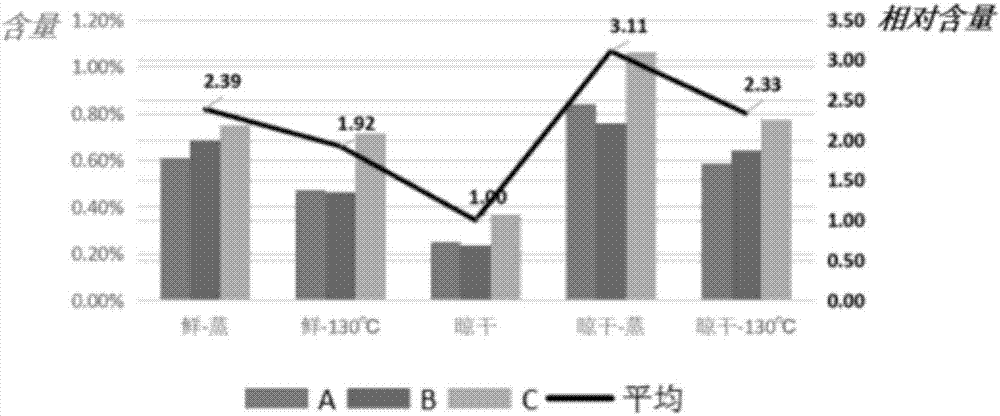Traditional Chinese medicine material treatment method
A processing method and technology of traditional Chinese medicinal materials, which are applied in pharmaceutical formulations, plant raw materials, plant/algae/fungus/moss components, etc., can solve problems such as the requirements for processing without a clear origin, the content does not meet the requirements, and the process is unclear. Achieve the effect of shortening processing time, improving product quality and reducing costs
- Summary
- Abstract
- Description
- Claims
- Application Information
AI Technical Summary
Benefits of technology
Problems solved by technology
Method used
Image
Examples
Embodiment 1
[0034] Harvest Epimedium in early June, remove weeds and rhizomes, place in a closed but not sealed box that can be vented with water vapor, compact it, seal it (not sealed), let in water vapor, and start timing from the time when the steam fills the box. Treat for 30 minutes, stop the treatment, take it out, shred it with a shredder, and then immediately dry it at 110°C until the water content is below 10%, cool it down to room temperature naturally, take a sample, and test it according to the "Chinese Pharmacopoeia" Epimedium decoction pieces, and it is qualified Finally, it is packaged by mechanical packaging, stored and transported. The decoction pieces of Epimedium Herba treated above conformed to the Pharmacopoeia standard, and the average content of icariin was 0.60%, which was significantly higher than the content in Example 2, and the content remained unchanged after being placed at room temperature for 24 months.
Embodiment 2
[0036] The Epimedium harvested from the same batch of production places as in Example 1, after removing impurities, was dried and packaged according to the custom of the production place. One week later, take it out, spray it with water until soft, shred it with a shredder, dry it in the sun, take a sample, and test it according to the decoction pieces of Epimedium in "Chinese Pharmacopoeia". The average content of icariin in the processed Epimedium decoction pieces is 0.51%, and the content is 0.48% after being placed at room temperature for 24 months. Its traditional packing volume is 1.5-2 times of embodiment 1.
Embodiment 3
[0038] Epimedium was harvested in the place of origin, and processed according to Example 1 and Example 2, respectively, and the average contents of the processed pieces were 0.55% and 0.25%, respectively.
PUM
 Login to view more
Login to view more Abstract
Description
Claims
Application Information
 Login to view more
Login to view more - R&D Engineer
- R&D Manager
- IP Professional
- Industry Leading Data Capabilities
- Powerful AI technology
- Patent DNA Extraction
Browse by: Latest US Patents, China's latest patents, Technical Efficacy Thesaurus, Application Domain, Technology Topic.
© 2024 PatSnap. All rights reserved.Legal|Privacy policy|Modern Slavery Act Transparency Statement|Sitemap


